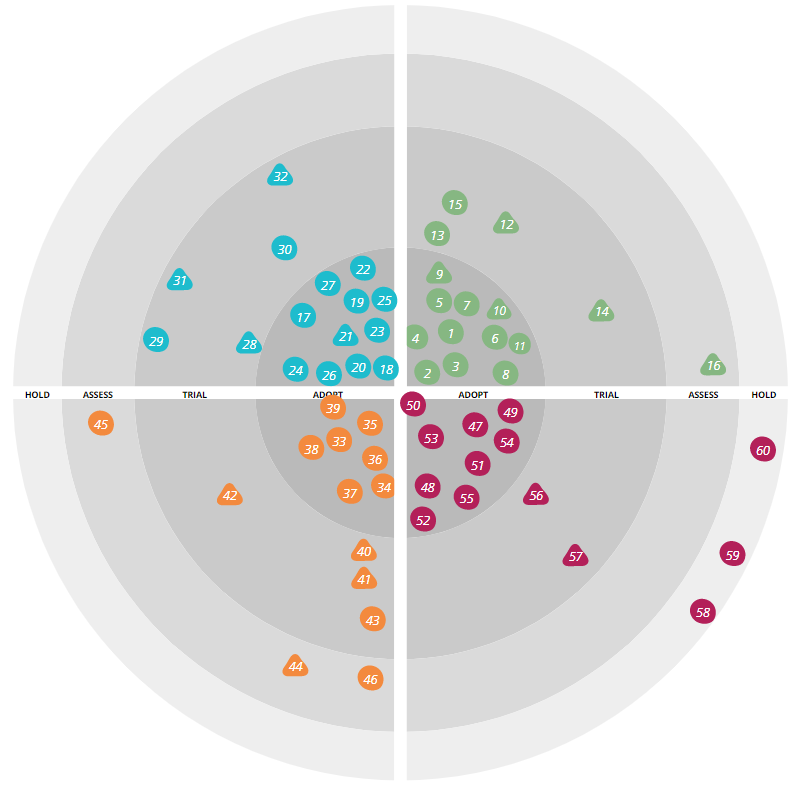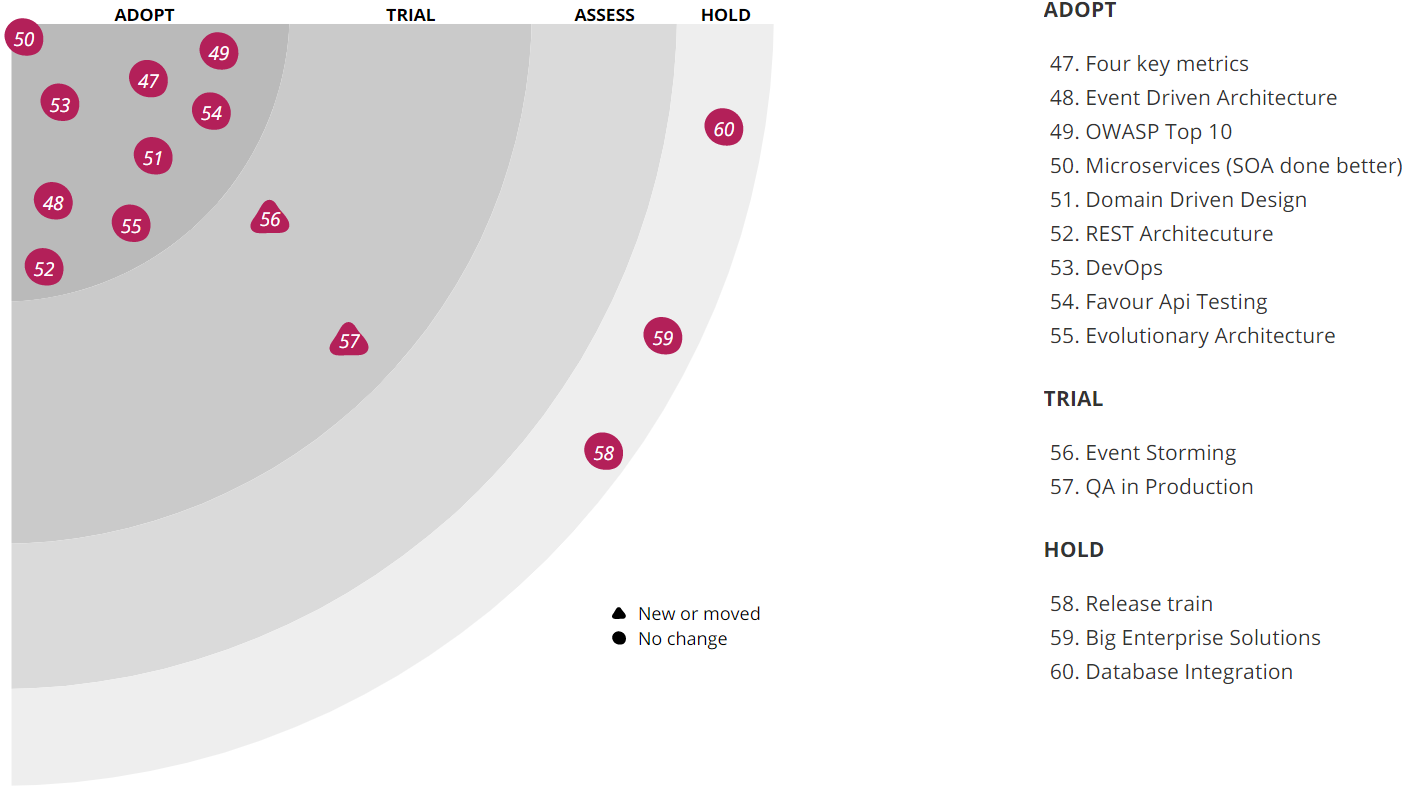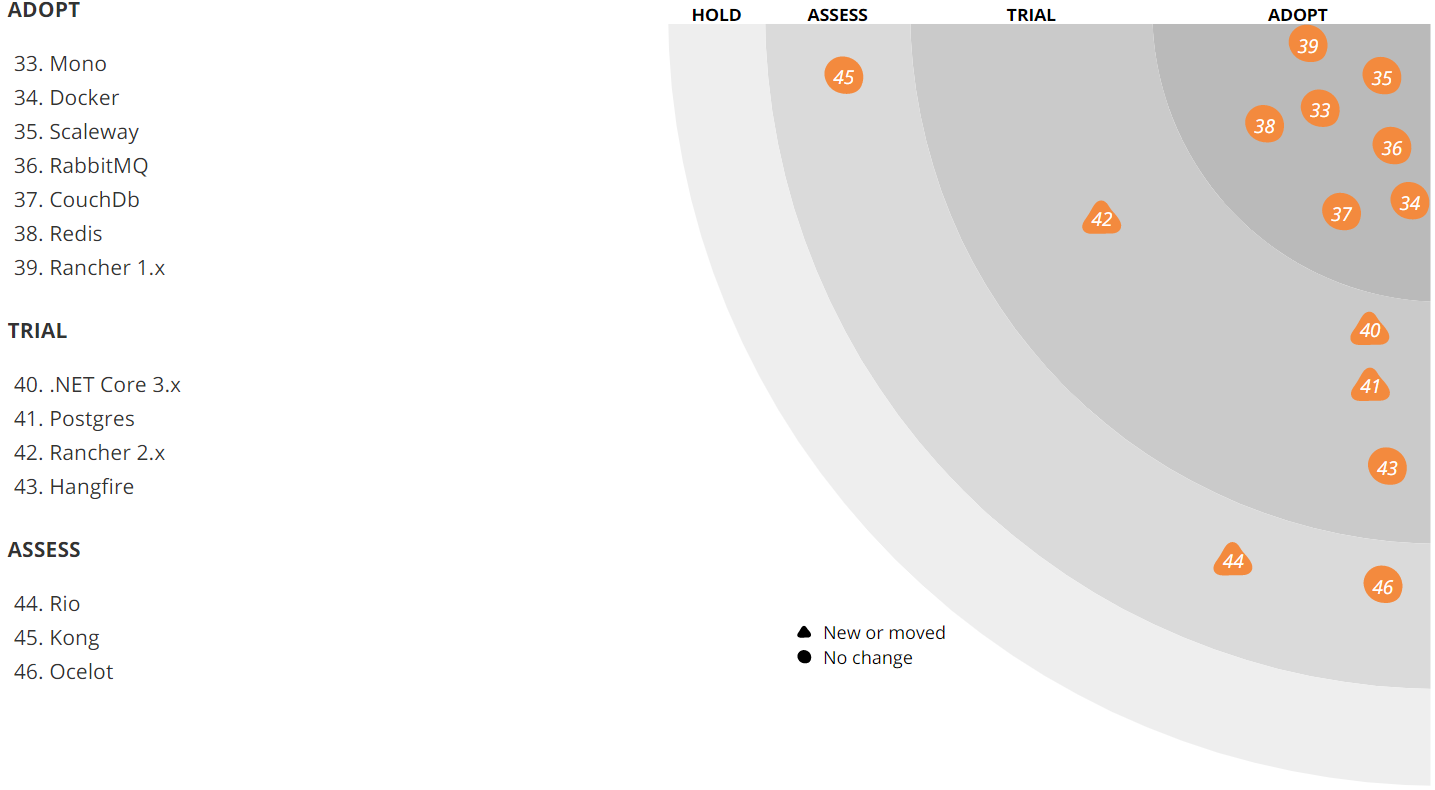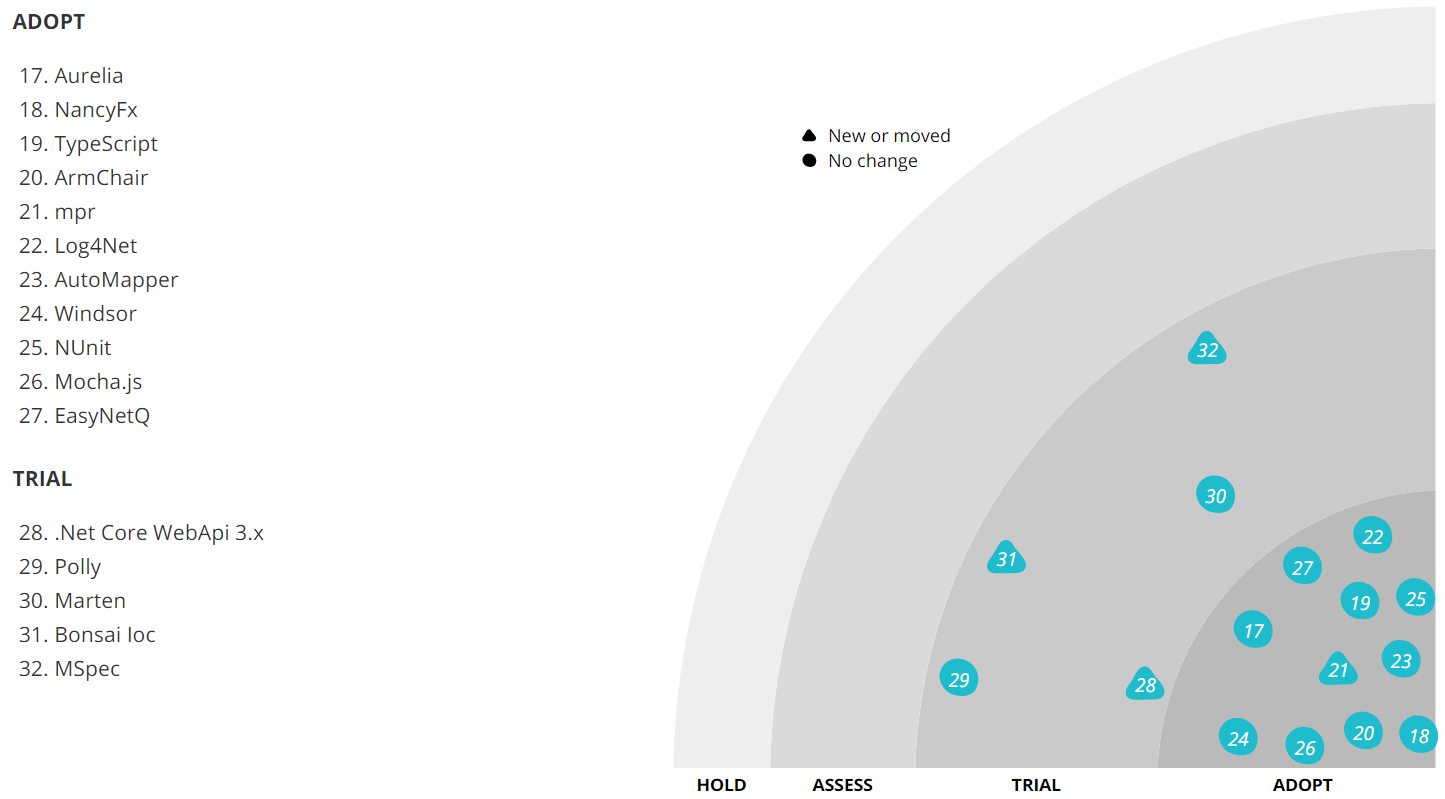We can use a tech radar to show which technologies are of interest for use in our platform.
This post we look at a tech-radar for a .NET micro-services platform, of which is looking to migrate some of its technology.
The concept should be reuseable to other peoples/companies platforms.
TLDR;
- Use the radar to manage whats in use, or interest and what should be avoided.
- Can visualize and communicate intent to others
- A radar is individual to a platform, as each platform will have its own constraints and context.
- start with a simple radar and grow it over time.
- a radar should be continually reviewed
- a radar is a snapshot in time.
Background
I first came across tech-radars from Thoughtworks, which showed technologies that the company observed, and provided them a mechanism to communicate their lessons learned from consulting on a number of projects.
A tech radar is used by multiple companies to allow them to manage their technology estate and coordinate its change.
A dotnet platform
The platform we are reviewing is built using
- .NET services (running mono)
- Microservices
- Linux Containers
however given new changes in the landscape the platform owners want to address 4 key area’s
- .NET Mono, upgrading to .NET Core 3.x
- Rancher 1.x being made obsolete
- Upgrading the backend database technology
- possible change of API Gateway technology
this platform has some key constraints mainly it has very limited resources (team size and money). This drives the platform to adopt open-source and SaaS components which support small projects.
technology radar
Thougthworks provides a website which allows you to create your own radars, found here: https://radar.thoughtworks.com
We can use this to create a radar which shows the key technology and convey some of these concerns.
Overview
The radar is split into 4 main quadrants, here are the default ones:
- Tools
- Language and frameworks
- Platforms
- Techniques
Techniques
Technology is implemented using techniques, these are key and also impact other quadrants.
observations:
- This platform has a number of techniques which correlate with each other. its all about building small and composing big.
Platform
Technologies which we run our platform on.
observations:
- Postgres is being considered as a new database technology
- Rancher 2.x is being looked into as a direct placement for 1.x, however Rio is also being understood.
- .NET core 3.x is in progress but not ready to obsolete Mono
- kong and ocelot are being looked at but not acted on yet.
Languages and frameworks
The key components which we develop the platform with.
observations:
- Marten will be used to support the adoption of Postgres
- changing to .NET core runtime, has prompted trailing out Bonsai IoC and Polly to obsolete Castle Windsor.
- NancyFx has, unfortunately, had a slowdown in development, and ASPNET core WebApi is being adopted to replace it.
Tools
Technology used in creating/maintaining the platform.

observations:
- Rancher 1.x along with Logentries provided a MVP to support DevOps. Prometheus is going to be trialed with Rancher 2.x to provide the required information.
- Zipkin is being trialed to improve on the platform monitoring
- development pipelines are looking to move over to CodeFresh
Obsoleting technology
This radar shows a large story of a number of technologies being obsoleted and replaced, the radar itself is a snapshot in time. The following is a possible flow of how technology may happen over time:
- New technology needs to be assessed to identity which one can be utilise.
- A candidate technology is trialed in-order to find how it will be used in the platform and how we transition to it
- the new technology is adopted into the platform
- if the new technology replaces some existing technology, we can then put this on hold
In this case-study, the next radar will show a number of technologies being put on hold and other being adopted.
Conclusion
The tech radar supports technical architects to manage the platform’s technical landscape.
It can be (and most likely should be) used to support the platform Roadmap.




